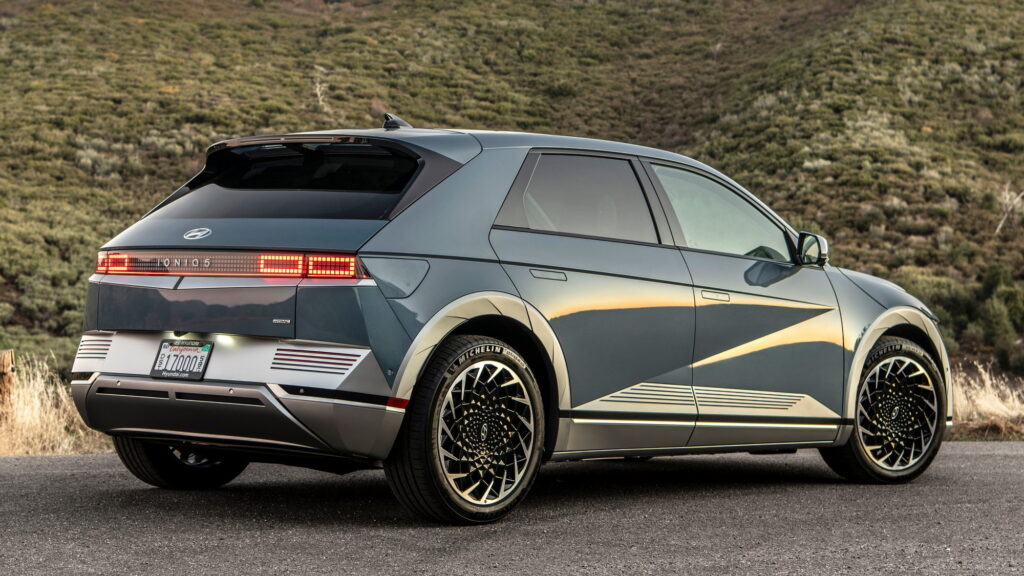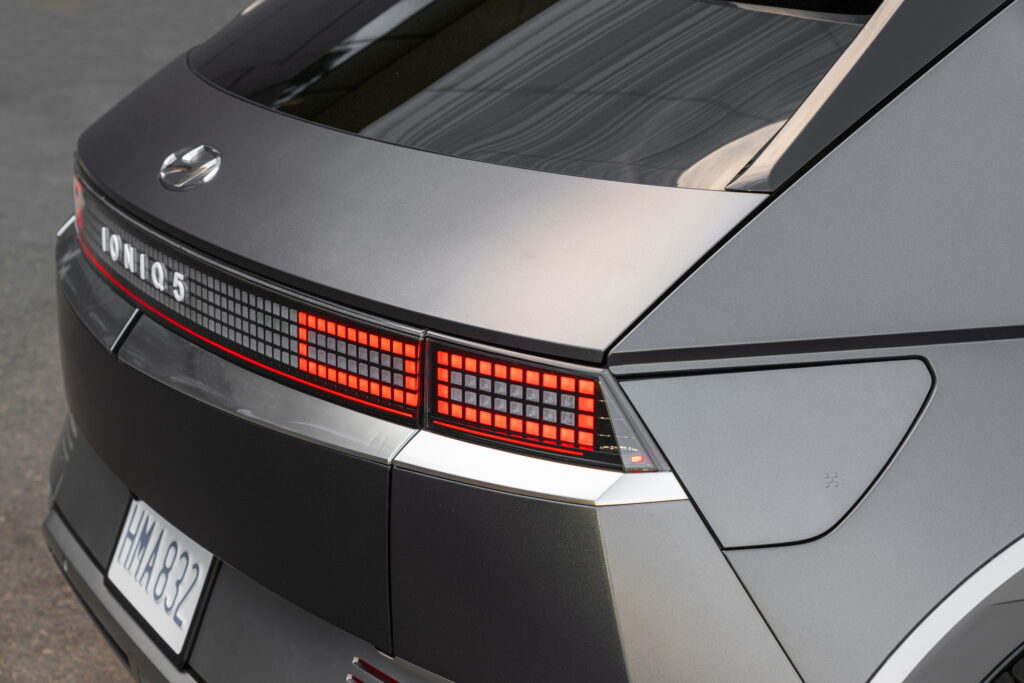American safety regulators don’t have rules determining how brake lights should work while regenerative braking is happening, leading to potential safety issues
4 hours ago
 –>
–> 
–>
The rise of regenerative braking in electrified vehicles has led to a design issue that the Hyundai Motor Group’s EVs may be failing. Research suggests that its vehicles may be slowing quickly without warning other drivers on the road.
The issue of vehicles slowing without drivers pressing the brake pedal has long been known, but was most recently raised by the YouTube channel, Technology Connections. It raised concerns about the Hyundai Ioniq 5‘s brake lights, which did not illuminate while the vehicle slowing in one-pedal driving mode. Although the driver’s foot was not on the brake pedal, the deceleration was significant enough to cause concern for the video’s host.
The video has since garnered more than 2 million views, and the attention of Consumer Reports, which looked into the issue. It found that the 2022 Ioniq 5 SEL, the 2023 Genesis GV60 Advanced, the 2023 Electrified GV70, the 2022 Kia EV6 Wind AWD, and the 2023 Niro EV Wind did not illuminate their brake lights while deceleration levels were high.
Read: Stinging Audit Finds NHTSA Takes Too Long To Investigate Car Recalls

It found that these vehicles failed to do so despite the majority of the EVs in its fleet (even the Ioniq 6) did illuminate their brakes while the regenerative braking system was slowing the vehicle by 0.1g. It described this as a “slight but noticeable” amount of braking force.
“Until this issue is remedied, drivers of the affected EVs should stick with the Level 1 or Level 2 regenerative-braking modes and avoid using the stronger Level 3 and strongest i-Pedal modes,” recommended Jennifer Stockburger, the director of operations at Consumer Reports Auto Test Center.
advertisement scroll to continue
Hyundai told the outlet that is aware of the concerns raised here, but was clear to add that its vehicles abide by all applicable federal regulations related to braking. That raises another concern, namely that the National Highway Traffic Safety Administration (NHTSA) is behind the times.
“Federal Motor Vehicle Safety Standard No. 108 […] does not require the [brake] lamps to be activated at a specific level of deceleration,” a NHTSA spokesperson said. “The agency will be discussing these stop lamp issues with the respective manufacturers during their regularly scheduled meetings with NHTSA. NHTSA currently does not have any open rulemakings to establish a new requirement on this topic.”
Similarly, as a result of this testing, Consumer Reports found that Mercedes’ electric vehicles have some brake light issues of their own. It found that in “Strong Recuperation” mode, the brake lights turn off as the vehicle is coming to a stop.
Although the brake lights illuminate as the vehicle starts slowing, when the vehicle slows to a speed of less than 5 mph (8 km/h) they turn off. That may be because Mercedes has designed the vehicles to slow less aggressively at that speed, to smooth out the braking process. Although Mercedes says that its brake lights abide by all federal regulations, CR argues that they still pose a risk to safety.
“In the interest of safety, we think a vehicle’s brake lights should stay on while the vehicle is stationary—as if the driver has their foot on the brake pedal,” said Alex Knizek, CR’s head of auto testing. “This makes the car more visible to vehicles approaching from behind and indicates that the driver intends to remain stationary.”
[embedded content]


